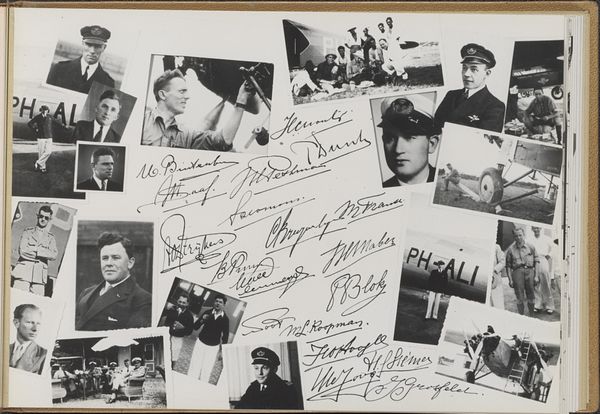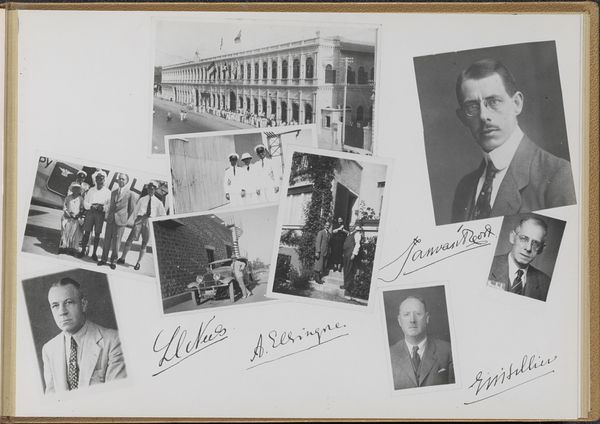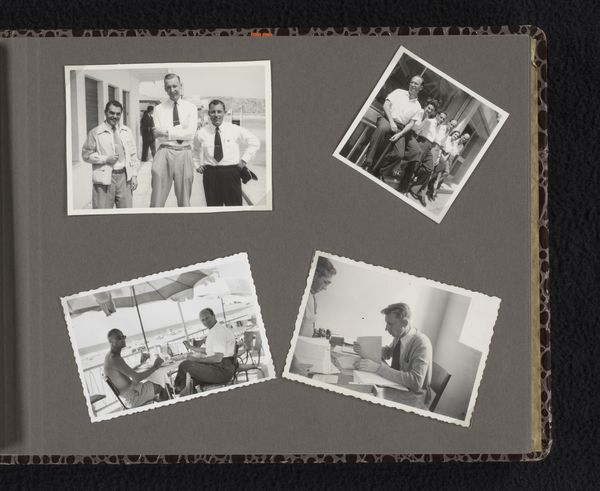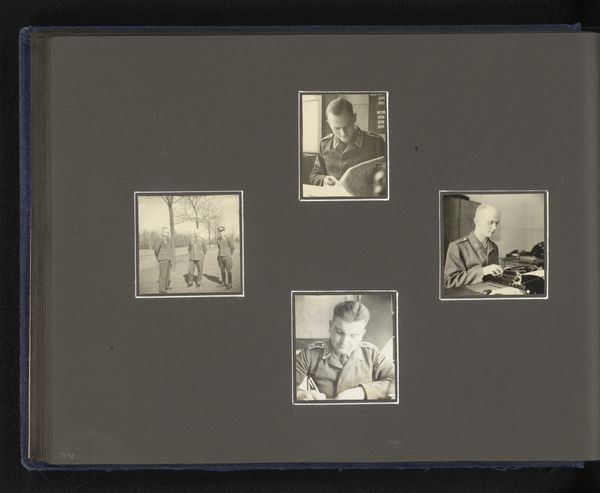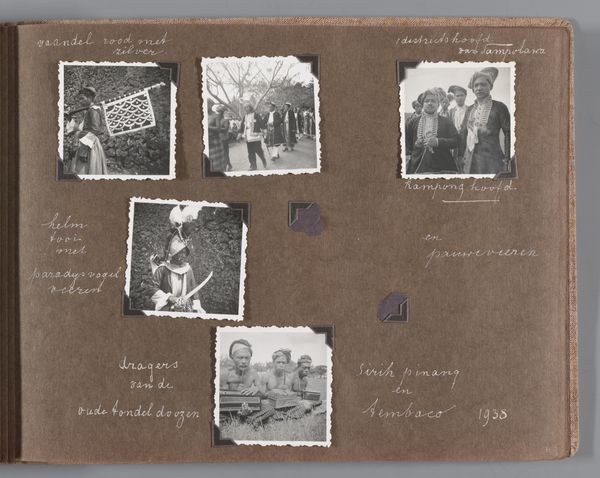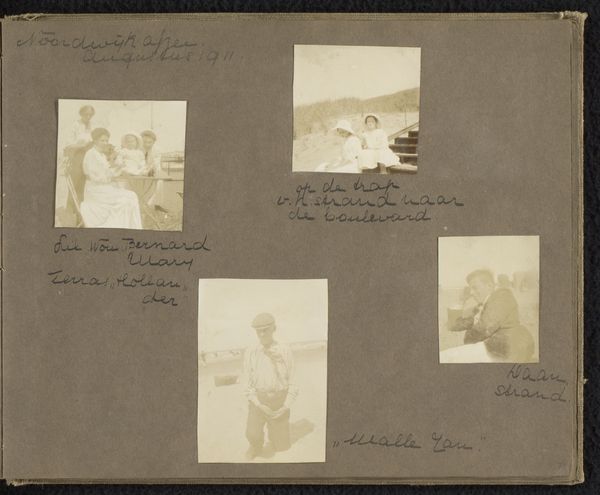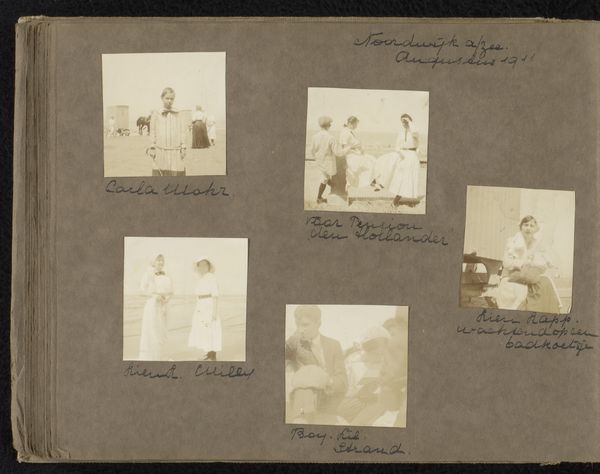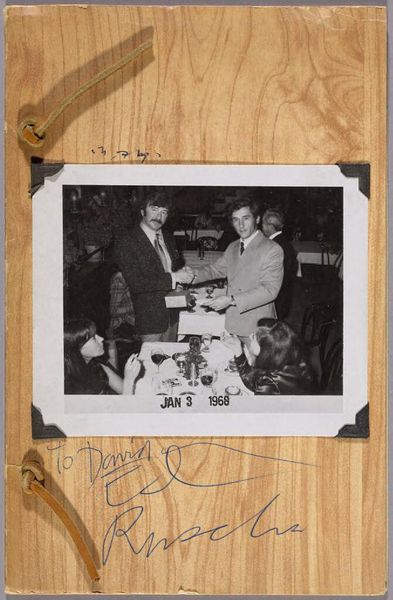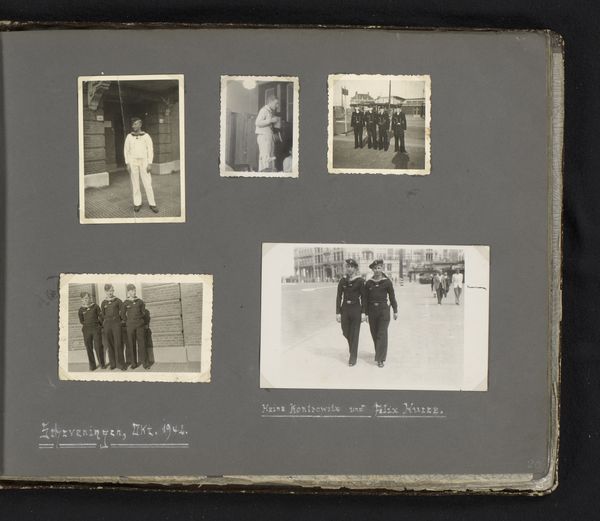
Handtekeningen, brief en foto's van zakenrelaties van Hans Martin c. 1949
0:00
0:00
anonymous
Rijksmuseum
mixed-media, collage, paper, photography
#
portrait
#
yellowing
#
biography
#
aged paper
#
mixed-media
#
toned paper
#
collage
#
parchment
#
paper
#
tea stained
#
photography
#
portrait reference
#
journal
#
warm-toned
#
handwritten font
Dimensions: height 272 mm, width 395 mm
Copyright: Rijks Museum: Open Domain
Curator: The Rijksmuseum is home to a captivating collage entitled "Handtekeningen, brief en foto's van zakenrelaties van Hans Martin," or "Signatures, Letter, and Photographs of Business Relations of Hans Martin." Created circa 1949, it is composed of mixed media, incorporating photographs and various papers. What strikes you initially? Editor: I'm immediately drawn to the aged, warm-toned feel of the piece. The yellowing paper and faded photographs create an intimate, almost nostalgic atmosphere. It feels like leafing through someone's private journal. Curator: Indeed. This piece offers a unique glimpse into the professional world of Hans Martin in the mid-20th century. We see formal portraits interspersed with handwritten notes and signatures. It's fascinating to consider the social dynamics at play. What kinds of power dynamics are visible through their signatures? Are they ranked in ways by how much space they are afforded? Editor: Absolutely. And, I think about the implications of preserving these types of "records." While likely considered less historically important, their content and materiality serve as records to fill in the gaps created by official narratives, perhaps providing more insight into daily operations. Consider these relationships—do we know if all these business partners were benefitting equally from their collaborative endeavors? What were some of the cultural or business norms present? How would those things affect things like business opportunities for marginalized communities, for example? Curator: That’s a sharp observation, thinking about the potential blind spots of these kinds of collections. The collage’s presentation—the careful arrangement of elements—suggests an effort to create a specific narrative. Was Hans Martin deliberately constructing a record of his success, and perhaps a curated display of relationships with more successful colleagues? Editor: The act of collaging itself has a deeper resonance when considering marginalized histories, and particularly in representing the fractured experiences and identities within those communities. It invites us to think critically about representation, erasure, and whose voices are amplified. Here, Hans Martin may be controlling his personal image and brand. Curator: This reminds me to investigate the institutional collecting practices when determining the historical value of "ephemera" as it offers a lens through which to view not only individual agency, but also the broader power structures at play within historical narratives. Thank you, this made me rethink about not only who gets included, but whose voice dictates the narration! Editor: Of course, reflecting on that really enhanced my experience of viewing this piece.
Comments
No comments
Be the first to comment and join the conversation on the ultimate creative platform.

